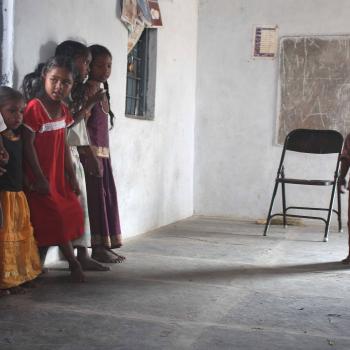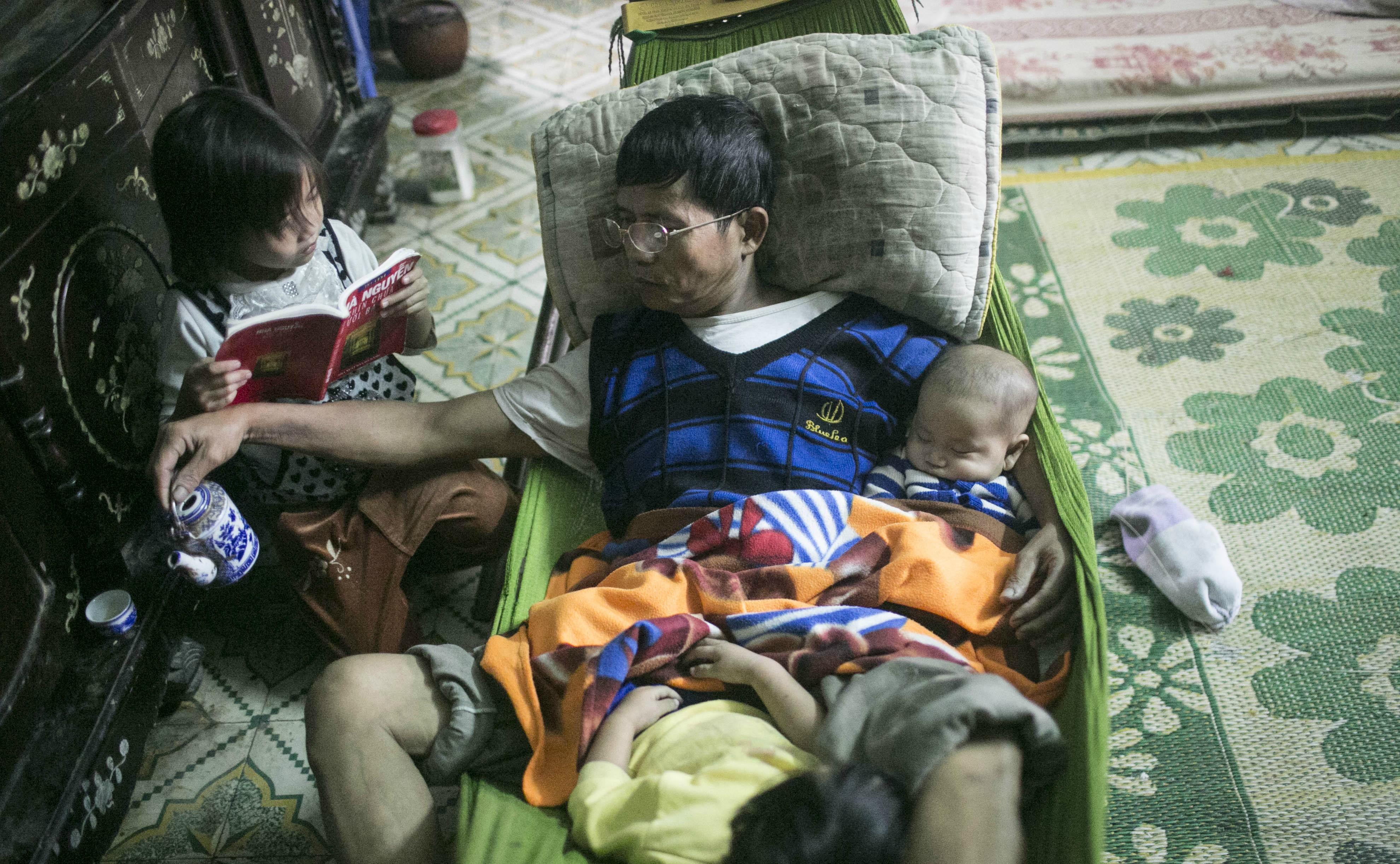
Last week I attended an excellent seminar run by both DFID’s Inclusive Societies and Statistics Departments. Drawing on the findings of an Open Policy Consultation and expert contributors, it asked whether we have sufficient data about the lives of younger and older people to monitor the Sustainable Development Goals and inform the Leave No One Behind agenda.
DFID wants “ … a data revolution! Data need to be collected, disaggregated, analysed, used and disseminated for all people everywhere.”
Data or Advocacy?
Halfway through the morning, an audience member asked if this about the technical business of collecting better data, or about advocacy?
I was struck by how difficult it is to disentangle the two. Of course, it is vital that the international community collectively gets behind national statistical offices to support gathering of robust data on those who are most likely to be left behind, to shine a light on their lives, design better interventions and find out whether efforts have been successful. But challenging definitions and collecting new data to reshape the way we think about the world has always been at the heart of great advocacy. From feminist grassroots organisations pressing for better data about women’s work, to disabled people’s organisations campaigning for the Convention on the Rights of Persons with Disabilities and monitoring of disabled people’s realisation of their rights, marginalised people have often struggled for their circumstances to be recognised and counted; so that the things that matter are measured.
What about children?
The discussion paper written by Plan UK for the DFID’s Open Policy Making process argues “When young people are not counted they are invisible. Policies are not made for them. They don’t get the help they need. They are locked out of development. They are left behind.” It recommends better data on under 15’s, and support for children and young people to collect and use data on their rights. And of course, better counting – through registration of births, marriage, divorce, and death – is not just about monitoring. It’s also a means for children to claim their rights as citizens. SDG Target 16.9 aims to ensure legal identity for all, including birth registration by 2030: a huge undertaking when there are roughly 750 million children still under the age of 16 whose births have not been registered. As the data 2X project argues, quality vital statistics systems can have disproportionately positive benefits for girls and women.
The discussion got me thinking about the role of a longitudinal survey such as Young Lives in a data revolution. We’re a child poverty research study, not an advocacy project. But there is something very powerful for the Leave No One Behind agenda about the relationship that Young Lives researchers have built up with 12,000 children and their parents and grandparents over the past 15 years, and the in-depth longitudinal qualitative work that has been ongoing with 200 children.
Sarada, a 19 year old who has been involved in the study since she was 7 years old says,
“I am able to share my feelings with you. You asked me about my family, friends, my happiness and sadness and my sufferings. I felt good expressing myself about all these.”
Some of the things that matter to the Young Lives children – education, nutrition, income – are captured in conventional data. Others – family relationships and friendships, time use, aspirations for the future, experience of violence, and stigma – less so.

The life course in action
The study findings don’t just capture information about a particular moment in a child’s life, they show the life course in action. It’s this ongoing relationship that allows us to understand how stunting and early learning are strongly related to poverty and rurality, and how the impact of disadvantage accumulates over time, and is overlaid from early adolescence by widening gender inequalities. It’s enabled researchers to establish links the negative effects of corporal punishment in schools on children’s later maths scores. And it’s shone a light on the complex relationship between poverty, shifting gender and social norms and harmful practices in Ethiopia: where child marriage and FGM are clearly on the decline but are seen by some families and some older girls as a way to protect daughters from socio-economic risks in a male dominated society here economic opportunities and social protection for girls are limited. . Conclusions like these have the potential to reframe policy debates. Sometimes they reconfirm that investments and interventions are on the right track, and that’s important too.
Longitudinal research offers an insight into long-term trends, away from specific interventions. For example, despite rapidly increasing school enrolment Young Lives has evidence that in some countries, the quality of education is actually in decline, particularly for the poorest children: a significant challenge for the achievement of the Education Goal. Community profiles tell a story of changing gender norms, economic opportunities, infrastructure and access to technologies. Future longitudinal research offer a way to understand how far the ambition of the SDGs has translated into real-life changes.
No data left behind
By opening up the data to all, the Young Lives study hopes that researchers, decision-makers and children’s organisations will have better tools to understand the toll that poverty and exclusion takes on children across the life course, and that the aspirations and resilience of children and the older generations who nurture them will inform a programme of sound and well-timed investments which ensure that the Sustainable Development Goals are met for every child.

Last week I attended an excellent seminar run by both DFID’s Inclusive Societies and Statistics Departments. Drawing on the findings of an Open Policy Consultation and expert contributors, it asked whether we have sufficient data about the lives of younger and older people to monitor the Sustainable Development Goals and inform the Leave No One Behind agenda.
DFID wants “ … a data revolution! Data need to be collected, disaggregated, analysed, used and disseminated for all people everywhere.”
Data or Advocacy?
Halfway through the morning, an audience member asked if this about the technical business of collecting better data, or about advocacy?
I was struck by how difficult it is to disentangle the two. Of course, it is vital that the international community collectively gets behind national statistical offices to support gathering of robust data on those who are most likely to be left behind, to shine a light on their lives, design better interventions and find out whether efforts have been successful. But challenging definitions and collecting new data to reshape the way we think about the world has always been at the heart of great advocacy. From feminist grassroots organisations pressing for better data about women’s work, to disabled people’s organisations campaigning for the Convention on the Rights of Persons with Disabilities and monitoring of disabled people’s realisation of their rights, marginalised people have often struggled for their circumstances to be recognised and counted; so that the things that matter are measured.
What about children?
The discussion paper written by Plan UK for the DFID’s Open Policy Making process argues “When young people are not counted they are invisible. Policies are not made for them. They don’t get the help they need. They are locked out of development. They are left behind.” It recommends better data on under 15’s, and support for children and young people to collect and use data on their rights. And of course, better counting – through registration of births, marriage, divorce, and death – is not just about monitoring. It’s also a means for children to claim their rights as citizens. SDG Target 16.9 aims to ensure legal identity for all, including birth registration by 2030: a huge undertaking when there are roughly 750 million children still under the age of 16 whose births have not been registered. As the data 2X project argues, quality vital statistics systems can have disproportionately positive benefits for girls and women.
The discussion got me thinking about the role of a longitudinal survey such as Young Lives in a data revolution. We’re a child poverty research study, not an advocacy project. But there is something very powerful for the Leave No One Behind agenda about the relationship that Young Lives researchers have built up with 12,000 children and their parents and grandparents over the past 15 years, and the in-depth longitudinal qualitative work that has been ongoing with 200 children.
Sarada, a 19 year old who has been involved in the study since she was 7 years old says,
“I am able to share my feelings with you. You asked me about my family, friends, my happiness and sadness and my sufferings. I felt good expressing myself about all these.”
Some of the things that matter to the Young Lives children – education, nutrition, income – are captured in conventional data. Others – family relationships and friendships, time use, aspirations for the future, experience of violence, and stigma – less so.

The life course in action
The study findings don’t just capture information about a particular moment in a child’s life, they show the life course in action. It’s this ongoing relationship that allows us to understand how stunting and early learning are strongly related to poverty and rurality, and how the impact of disadvantage accumulates over time, and is overlaid from early adolescence by widening gender inequalities. It’s enabled researchers to establish links the negative effects of corporal punishment in schools on children’s later maths scores. And it’s shone a light on the complex relationship between poverty, shifting gender and social norms and harmful practices in Ethiopia: where child marriage and FGM are clearly on the decline but are seen by some families and some older girls as a way to protect daughters from socio-economic risks in a male dominated society here economic opportunities and social protection for girls are limited. . Conclusions like these have the potential to reframe policy debates. Sometimes they reconfirm that investments and interventions are on the right track, and that’s important too.
Longitudinal research offers an insight into long-term trends, away from specific interventions. For example, despite rapidly increasing school enrolment Young Lives has evidence that in some countries, the quality of education is actually in decline, particularly for the poorest children: a significant challenge for the achievement of the Education Goal. Community profiles tell a story of changing gender norms, economic opportunities, infrastructure and access to technologies. Future longitudinal research offer a way to understand how far the ambition of the SDGs has translated into real-life changes.
No data left behind
By opening up the data to all, the Young Lives study hopes that researchers, decision-makers and children’s organisations will have better tools to understand the toll that poverty and exclusion takes on children across the life course, and that the aspirations and resilience of children and the older generations who nurture them will inform a programme of sound and well-timed investments which ensure that the Sustainable Development Goals are met for every child.

